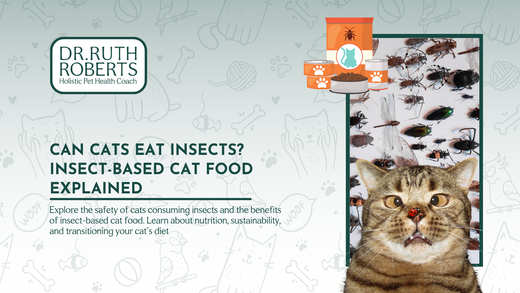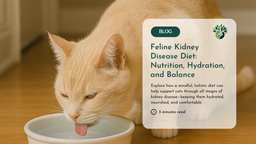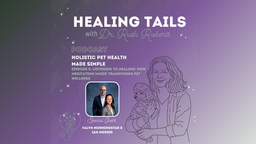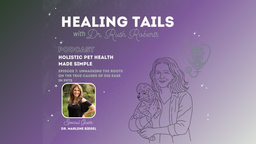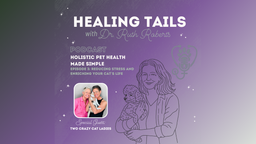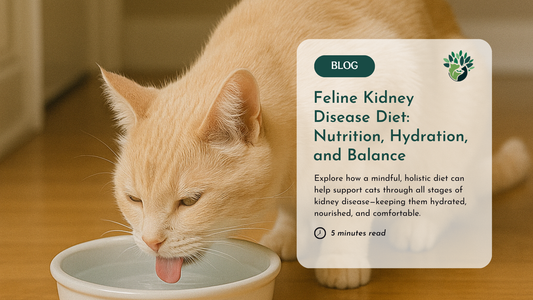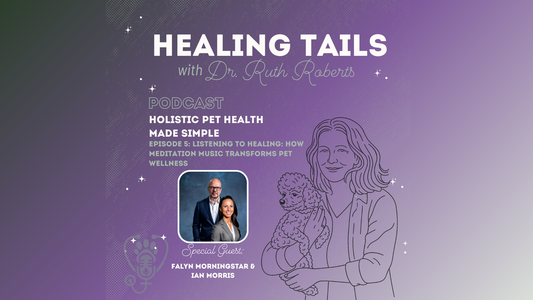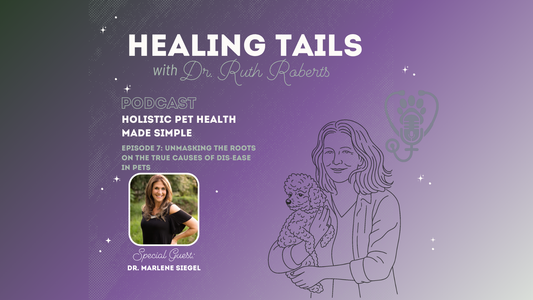As cat parents, we often witness our feline friends engaging in their natural hunting behaviors, especially when it comes to the smaller critters that invade our homes, like insects. But beyond the playful batting and chasing, can cats safely consume insects? Even more interesting, could insects ever be a regular part of a cat's food? Let's explore if they can actually eat them and what the upsides and downsides might be. We'll also look at the idea of feeding cats a diet made mostly of insects.
Can Cats Eat Insects?
Yes, cats can eat insects, and doing so is a natural behavior for them. In the wild, cats often catch and consume various small prey, including insects. Many common household insects like flies, spiders, and moths can be intriguing to cats, prompting them to hunt and sometimes eat them. Here are a few points to consider:
SAFETY AND HAZARD
Choking Hazard: Small insects like flies or ants might pose a choking risk, especially for kittens.
Toxic Insects: Some insects are toxic and can be harmful to cats if ingested. For example, fireflies contain chemicals that are toxic to cats and so do blister beetles, black widow or brown recluse spiders.
Allergic Reactions: Just like humans, cats can have allergic reactions to insect bites or stings.
Parasites: Some insects, like fleas and ticks, can carry diseases or parasites that may be transmitted to your cat.
What About an Insect-based Diet for Cats?
As the global population and pet ownership increase, so does the demand for protein, prompting a shift towards using insects as a sustainable protein source in pet foods like cat food. Insects are emerging as an eco-friendly alternative due to several factors. They have a minimal environmental footprint compared to traditional livestock, requiring significantly less land, water, and feed—for example, the black soldier fly converts 2 kg of feed into 1 kg of mass, far more efficiently than cattle. Additionally, insects reproduce rapidly and can be raised on organic waste, contributing to a circular economy by recycling nutrients and reducing waste, making them a highly sustainable choice for pet food production.
Some insects are already mass-produced as a protein source in the USA and can be consumed by both cats and humans include:

Mealworms: Mealworms are a popular choice as they are rich in protein, relatively easy to raise and can be used in various forms, such as whole or ground into meals.
Crickets: Can cats eat crickets? Crickets are another common insect used for protein. They can be dried and ground into powder, used as whole insects, or made into cricket flour for use in food products.
Black Soldier Fly Larvae (BSFL): BSFL are increasingly used in insect-based protein products due to their high protein content and ability to thrive on organic waste.
Grasshoppers: Grasshoppers are consumed in various cultures worldwide and are gaining popularity as a sustainable protein source.
Silkworms: Silkworms are also used as a protein source, especially in Asian cuisines.
Cockroaches (specifically farmed species): In some controlled environments, certain species of cockroaches are farmed for their protein content.
Locusts: Locusts are consumed in some regions and are considered a viable protein source.
Nutritional Benefits of Cats Eating Insect-Based Diets
The nutritional benefits of cats eating insect-based diets were explored in a recent study. In 2020, scientists studied the nutritional content and how well three different insect meals (speckled cockroach, Madagascar hissing cockroach, and superworm) are digested by adult cats. They compared these insect meals to a regular chicken-based diet.Here's what they found:
The insect meals were found to be rich in essential fatty acids like oleic acid, palmitic acid, linoleic acid, and stearic acid. These fatty acids are crucial for cats' overall health, including skin, coat, and cardiovascular function.
Essential Amino Acids
The insect meals were also high in essential amino acids, particularly branched-chain amino acids (BCAAs) and arginine. These amino acids are vital for muscle development, immune function, and protein synthesis in cats.
Digestibility
The study showed that cats could digest dry matter, organic matter, fat, and protein from insect-based diets as effectively as they could from a chicken-based diet. This indicates good digestibility and nutrient absorption.
Fecal Characteristics and Metabolic Markers
Cats on insect-based diets had similar fecal scores and metabolic markers compared to those on a chicken-based diet. This suggests that their digestive health and metabolic function were not negatively impacted by the insect meals.
The promising results from this study highlight the potential of insect-based diets to provide cats with the essential nutrients they need for optimal health. In the next section, we'll explore the environmental advantages of insect-based pet food. As concerns about resource depletion and climate change rise, insects offer a compelling alternative protein source with a significantly smaller environmental footprint.
Considerations for Insect-Based Cat Food
While insect-based cat food offers an exciting and environmentally friendly path forward, some hurdles need to be cleared before it becomes widely available. Here are the main areas that require attention:
Sourcing and Quality
Ensuring the safety and quality of insect ingredients is crucial. This involves sourcing from controlled environments with strict hygiene standards, akin to selecting fresh, high-quality ingredients for human food.
Balanced Diet
Formulating an insect-based diet that meets all of a cat's nutritional needs requires careful research. A proper balance of proteins, fats, vitamins, and minerals is essential to maintain cat health.
Regulatory Compliance
The use of insects in pet food is subject to varying regulations across different regions. Collaboration among manufacturers, regulatory bodies, and researchers is necessary to establish clear safety and quality standards for insect-based cat foods.
Transition Your Cat to Insect-Based Food
Introducing insect-based food to your cat should be a gradual process, as cats are creatures of habit. Here's a concise guide to making the transition smooth:

Final Thought
Insect-based cat food shows promise as a sustainable protein source, but challenges like sourcing quality ingredients and regulatory compliance must be addressed. Despite this, the nutritional benefits, environmental advantages, and gradual transition methods make it a viable option for cat owners seeking sustainable and nutritious diets for their pets. With collaborative efforts and continued research, insect-based diets could become a mainstream choice for feline nutrition in the future.
Resource
Villanueva, Valeria, et al. "Perception of cat owners on the use of insects as feed ingredients for cats." 2023. Available at: [URL: https://repositorio.uchile.cl/handle/2250/195358].
Hu Y, He F, Mangian H, Lambrakis L, Saad FM, de Godoy MRC. PSVI-26 Insect meals as novel protein sources in wet pet foods for adult cats. J Anim Sci. 2020;98(Suppl 4):315. Published 2020 Nov 30. doi:10.1093/jas/skaa278.561 Available at: [URL: https://www.ncbi.nlm.nih.gov/pmc/articles/PMC7703035/]


